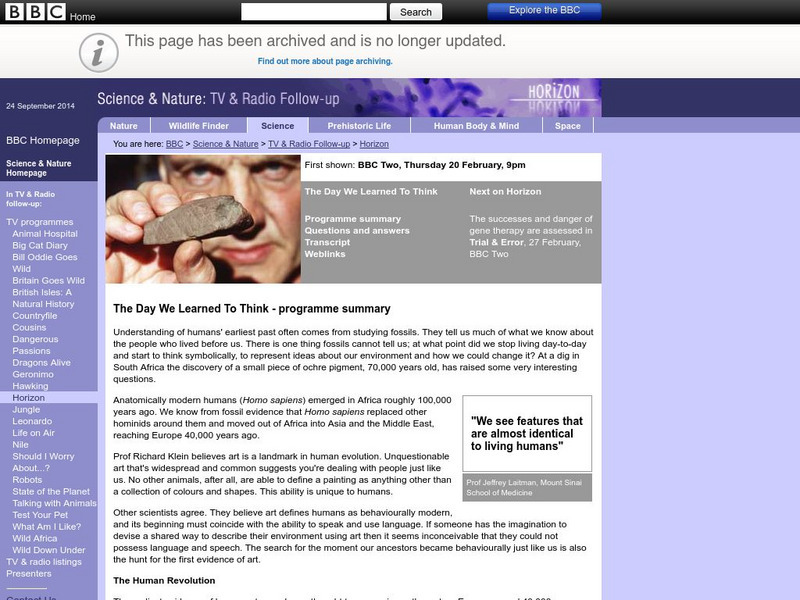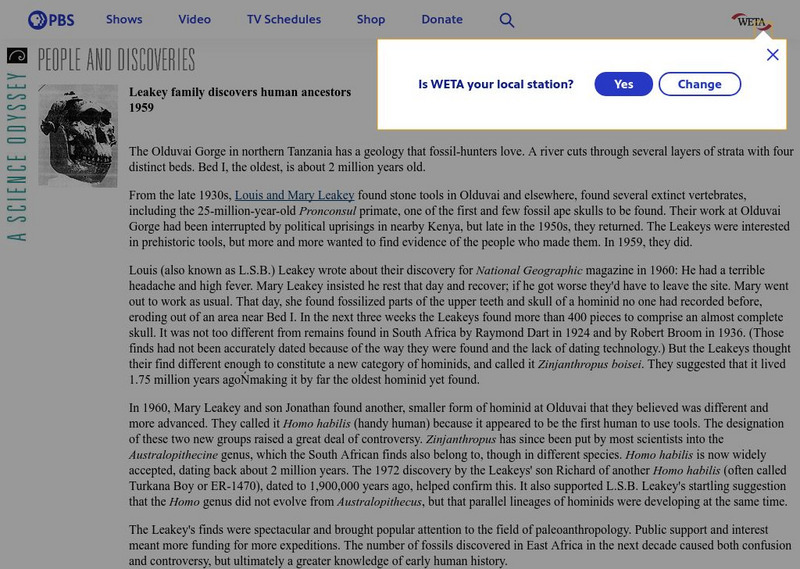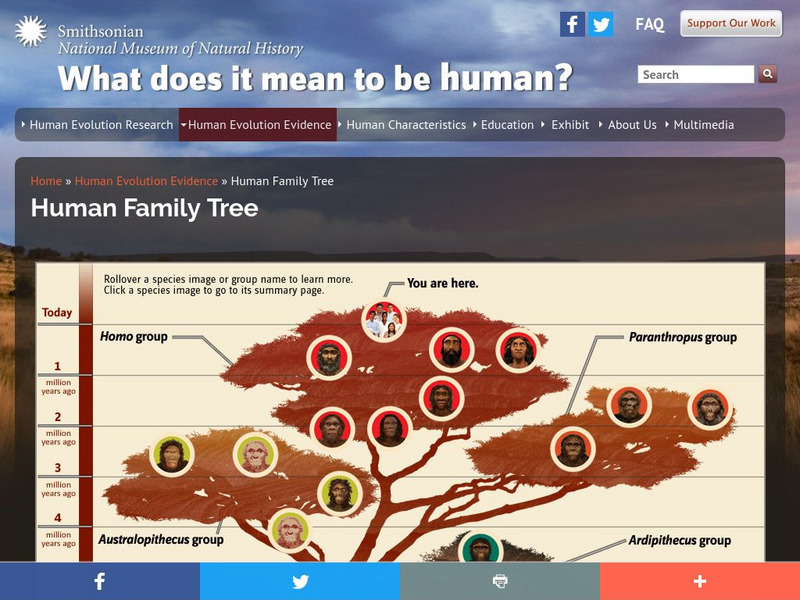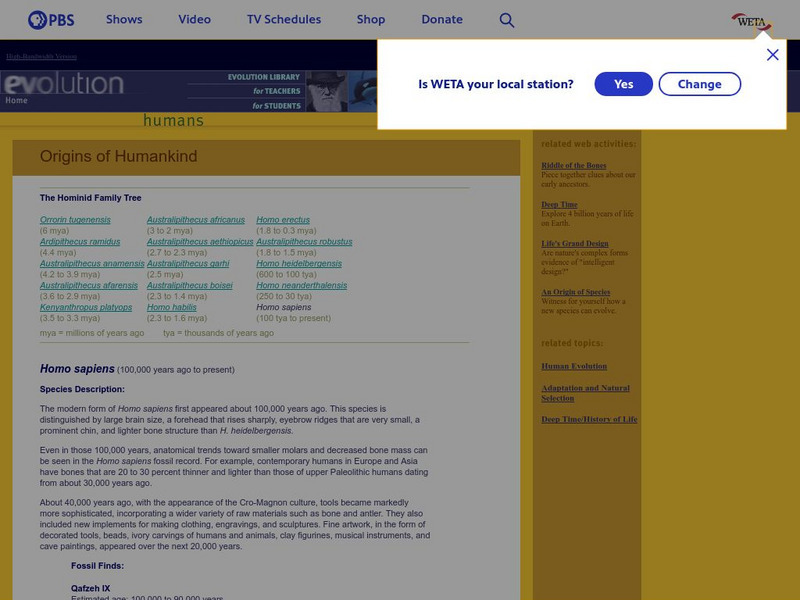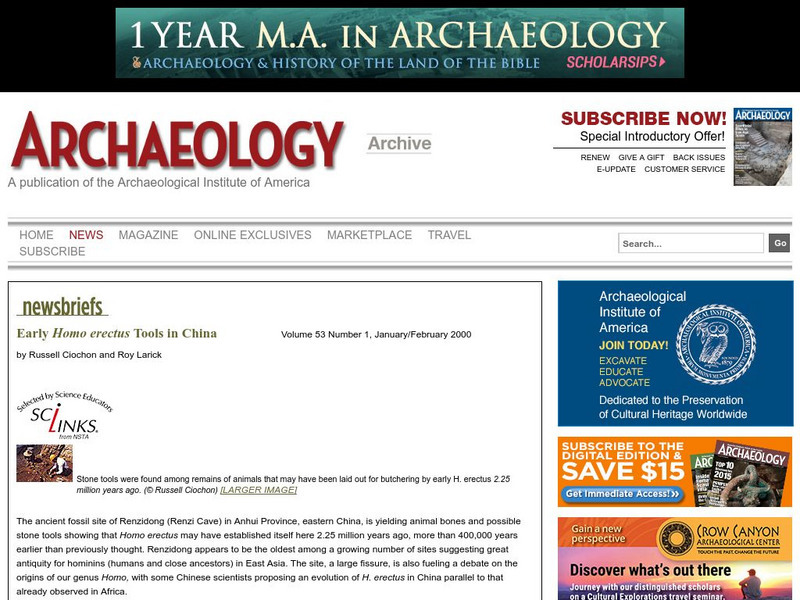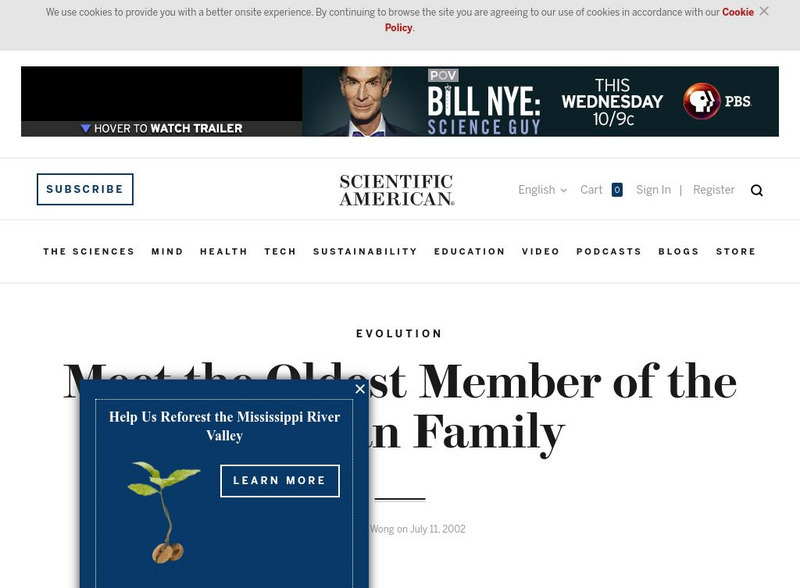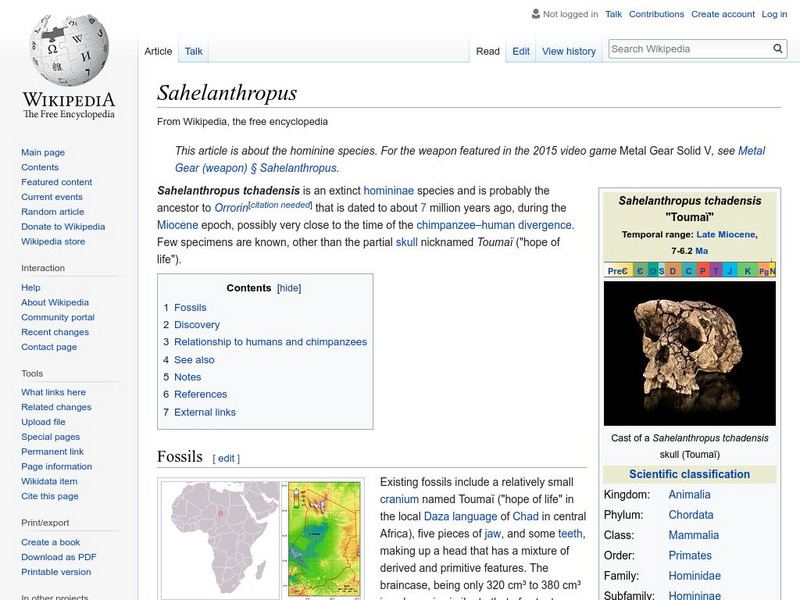Hi, what do you want to do?
Curated OER
Human Evolution: Biology, Bones
Learners will love a weeks worth of bone study. They use bones and characteristics of bones to explore the evolution of hominoids. Bones are compared, categorized, and considered. A great way to bring physical anthropology and material...
Curated OER
What is the Evidence for Evolution?
Learners identify one object that would tell the story of their lives. In groups, they determine what can and cannot be told from objects left behind. After watching a video, they compare and contrast chicken bones to human bones. To...
Curated OER
The Earliest Humans
Study the wonder and science that leads us to our human past. From Darwin and Huxley's assertions regarding the origin of the species to the discoveries at Oldivi Gorge, this PowerPoint is sure to interest your class. They'll learn about...
Curated OER
Investigating Our Past: Where Did Humans Come From?
Investigate the theories of human evolution. For this research based lesson, learners research and discuss how geographic isolation, interbreeding, generalization, and specialization are factors in the history of humans. Groups work...
Curated OER
A Brief History of Life: How Did Everything Begin?
Addressing the idea of intelligent design, as well as a number of creation myths, this presentation gives a measured and scientific perspective to the beginning of the world. It includes a graphic on the Big Bang Theory, evolution,...
Curated OER
Fossils: The Eras of the Earth's History
Young scholars research the four geologic eras of Earth's history. In this extension on a fossils lesson, students research the different eras of Earth's history. Young scholars use AppleWorks to create a bar graph containing information...
Curated OER
You Say You Want an Evolution?
Young scholars estimate the number of living organisms they might find in their local environment. After researching the types of organisms that existed during various geologic time periods, students describe how life forms have changed...
Curated OER
A Little Horse Sense
How have horses evolved over time? How do horse skulls reveal this evolution? How have the roles horses play changed over time? What kind of social structure do horse herds have? How should wild horse populations be managed? To find the...
Curated OER
A Dog's Life
Students get a look into the life of dogs-from their origins and basic biology, through selective breeding, and into how dogs have become intricate parts of everyday life for many people worldwide.
Curated OER
Prehistory: Our Ancestors Emerge
In this prehsitory worksheet, students read a 3-page article about antropological finds and then respond to 2 short answer questions based on the article.
BBC
Bbc: Science and Nature: The Day We Learned to Think
A summary of BBC program entitled, "The Day We Learned to Think." Offers a brief look at man's first works of art, early ability to speak, and evolution of intelligence. Offers questions and answers, a program transcript, and various...
Talk Origins Archive
Talk Origins: Fossil Hominids: Richard Leakey
Biography of Richard Leakey that deals with his paleontological work and his efforts to preserve African wildlife.
PBS
Pbs: Leakey Family Discovers Human Ancestors
The PBS site covers the Leakey family and their discoveries in Olduvai Gorge in Tanzania. This information was part of a PBS exploration of human evolution.
Smithsonian Institution
National Museum of Natural History: Human Origins: Human Family Tree
Find the human ancestor you are interested in and click on it either in the timeline or the list below for more details. Each fossil or reconstruction pictured includes links to more details about it.
PBS
Pbs: Evolution: Origins of Humankind: Homo Sapiens
Read a description of Homo sapiens as a species, learn about the variety of Homo sapiens fossils that have been found, and discover evidence of the culture of these early people.
Talk Origins Archive
Talk Origins: The Hominid Species
Talk Origins gives a broad description of the types of Hominid species, and then gives a description of each species. Includes the specific characteristics of each, and explains the differences between the species.
Archaeological Institute of America
Early Homo Erectus Tools in China
An article which describes a fossil site in eastern China where evidence has been found that Home erectus may have been active in eastern China some 400,000 years earlier than scientists believed. The authors also summarize the debate...
University of Washington
University of Washington: The Great Rift Valley of Eastern Africa
An overview of the Great Rift Valley complete with a discussion of the plate tectonics, volcanoes, and climate of the valley. Of particular interest is the section on Apekind to Mankind: Human Evolution in the Great Rift Valley. Reasons...
Scientific American
Scientific American: Oldest Member of the Human Family
This article, published by Scientific American (July 11, 2002), highlights the discovery of a nearly complete skull of the oldest and most primitive member of the human family known yet. This fossil, found in central Africa, contains a...
PBS
Pbs News Hour Extra: Scientists Discover Oldest Human Ancestor
Scientists have recently published their research into fossil bones from Ethiopia that they say came from an ancestor common to both humans and chimpanzees. They have named the ancestor Ardipithecus ramidus. In the articles and video,...
Wikimedia
Wikipedia: Sahelanthropus
An encyclopedia article on the oldest known hominid discusses the features of the fossils that were found, the region in which they were found, and what this means for human evolution.















